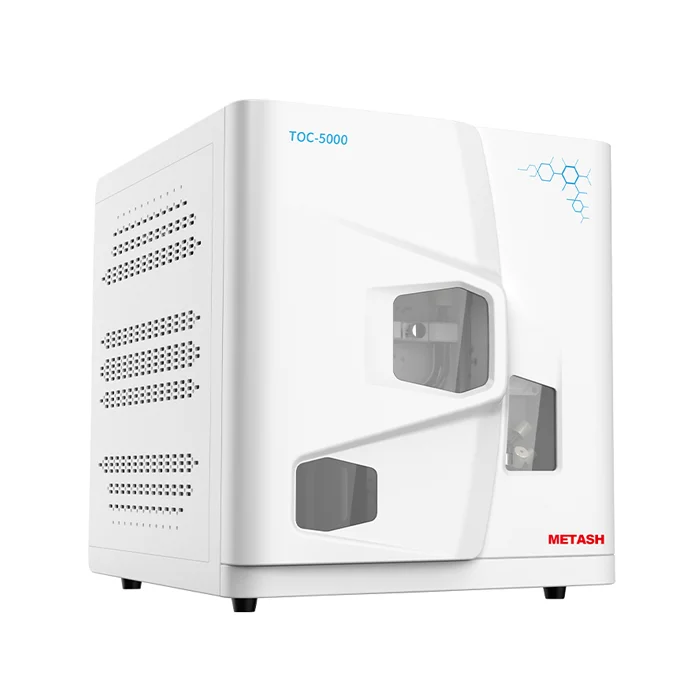- This topic is empty.
-
AuthorPosts
-
18/06/2025 at 16:50 #86529
Triethanolamine (TEA) is an organic compound that has become an indispensable raw material in many industries due to its unique chemical properties. However, ensuring its purity and understanding its physical and chemical properties are critical, especially in high-risk industries such as semiconductors. In this blog post, Metash, a high performance laboratory analysis equipment manufacturer, will share the role of lab total organic carbon analyzer in triethanolamine.
Triethanolamine (TEA), with the chemical formula C6H15NO3, is an organic compound belonging to the ethanolamine family. It is a colorless to light yellow viscous liquid, known for its weak alkalinity and strong hygroscopic nature. TEA's ability to dissolve readily in solvents like water and ethanol has made it a popular choice for various industrial processes. Since its first synthesis in the late 19th century, TEA has seen widespread industrial production and application. It is now a key component in multiple fields, including personal care products, industrial gas purification, metal processing, concrete additives, pharmaceuticals, and textile dyeing.
In the semiconductor industry, TEA's role is particularly critical. It serves as a key surfactant in essential processes such as polishing, cleaning, and photolithography. The weak alkalinity, strong complexing ability, and excellent surfactant properties of TEA allow it to effectively regulate the pH of polishing liquids, enhance the wetting of wafer surfaces, and uniformly disperse grinding particles. Moreover, TEA can efficiently remove metal contaminants and optimize the development process. The surfactant function of TEA is especially important as it directly impacts the stability of the process and the yield of the products.
Given the critical nature of TEA in these processes, analyzing its total organic carbon (TOC) content is of utmost importance. TOC analysis provides valuable insights into the physical and chemical properties of TEA and ensures the purity of the material used in semiconductor processes. This, in turn, helps in optimizing the surfactant performance and achieving high yield and reliability in semiconductor manufacturing.

The following article will share with you how to use the TOC 5000 RD total organic carbon analyzer to directly measure the TOC content in triethanolamine samples. The TOC 5000 RD is a sophisticated instrument designed to provide accurate and reliable TOC measurements. The analysis involved several steps, including the preparation of standard solutions and the dilution of TEA samples to ensure they fell within the measurable range of the standard curve.
The instruments and reagents used in this study included the TOC 5000 RD analyzer, sodium bicarbonate (ultrapure grade), potassium hydrogen phthalate (primary standard reagent), phosphoric acid (ultrapure grade), anhydrous sodium carbonate (primary standard reagent), and hydrochloric acid (ultrapure grade). The analysis conditions were carefully set to ensure accurate results. The TOC host carrier gas flow was maintained at 180.0 ml/min, with a pressure of 0.200 Mpa. The TC combustion tube temperature was set at 680°C, and the detector used was a non-dispersive infrared detector (NDIR).
For the sample preparation, 20 ml of the TEA sample was diluted with ultrapure water to 100 ml. The software's NPOC standard curve was then used to measure the organic carbon content in the samples. Additionally, spike recovery experiments were conducted to validate the accuracy of the measurements.
The results of the study were quite promising. The NPOC standard curve showed a linear correlation coefficient (R2) of 1, indicating a perfect linear relationship between the concentration and the measured response. The TOC content in the TEA samples was measured to be 18.8869 mg/L, with a spike recovery rate of 104.74%. These results demonstrated high accuracy and repeatability in the measurements.
The use of the TOC 5000 RD analyzer in this study highlights the importance of laboratory TOC analyzers in the analysis of triethanolamine. These instruments provide precise measurements that are essential for understanding the characteristics of TEA and ensuring its purity for industrial applications. In the semiconductor industry, where the quality of materials directly impacts the performance and reliability of products, the role of TOC analyzers cannot be overstated.
In conclusion, the lab TOC analyzer plays a pivotal role in the analysis of triethanolamine. It provides accurate measurements of TOC content, which is crucial for optimizing the surfactant properties of TEA and ensuring the purity of materials used in semiconductor manufacturing. As industries continue to demand higher standards of material quality and process optimization, the importance of TOC analyzers will only grow. They are not just tools for analysis but are essential for maintaining the high standards required in modern industrial processes.
http://www.metashcorp.com
Metash -
AuthorPosts
- You must be logged in to reply to this topic.